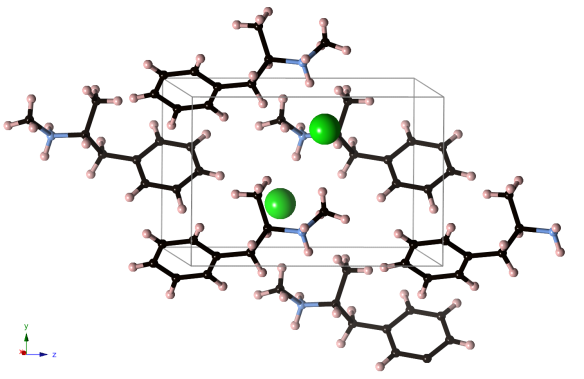Not another ice structure… Methamphetamine
What does it look like?

Dextromethamphetamine hydrochloride. Image generated using CrystalMaker: http://www.crystalmaker.com
What is it?
Let’s face it – it was only a matter of time until 'crystal' meth showed up on this blog.
Methamphetamine was first synthesised in 1893 by Japanese chemist Nagai Nagayoshi, with the crystalline form shown here developed in 1919. The substance was found to elevate mood and counteract fatigue, and was given to Allied bomber pilots during World War II. Unfortunately, it is also extremely addictive, and post-war Japan experienced the first meth epidemic. In higher doses, it can cause psychosis, among other nasty effects.
More specifically, this is the crystal structure of dextromethamphetamine hydrochloride (the green atoms in the structure are chlorines). It is common for drugs (both licit and illicit) to be made as hydrochloride salts because it increases their water solubility and stability. The non-salt 'free base' of methamphetamine is not even a crystal at room temperature, but a colourless liquid. The dextro prefix means that this is the more potent right-handed form of the methamphetamine molecule. The left handed mirror image, levomethamphetamine, has somewhat different properties and is actually sold as an over-the-counter nasal decongestant in some countries.
Where did the structure come from?
The crystal structure was re-determined in 2008 by P. Hakey et al. It can be found in the Crystallography Open Database (#2218183).






